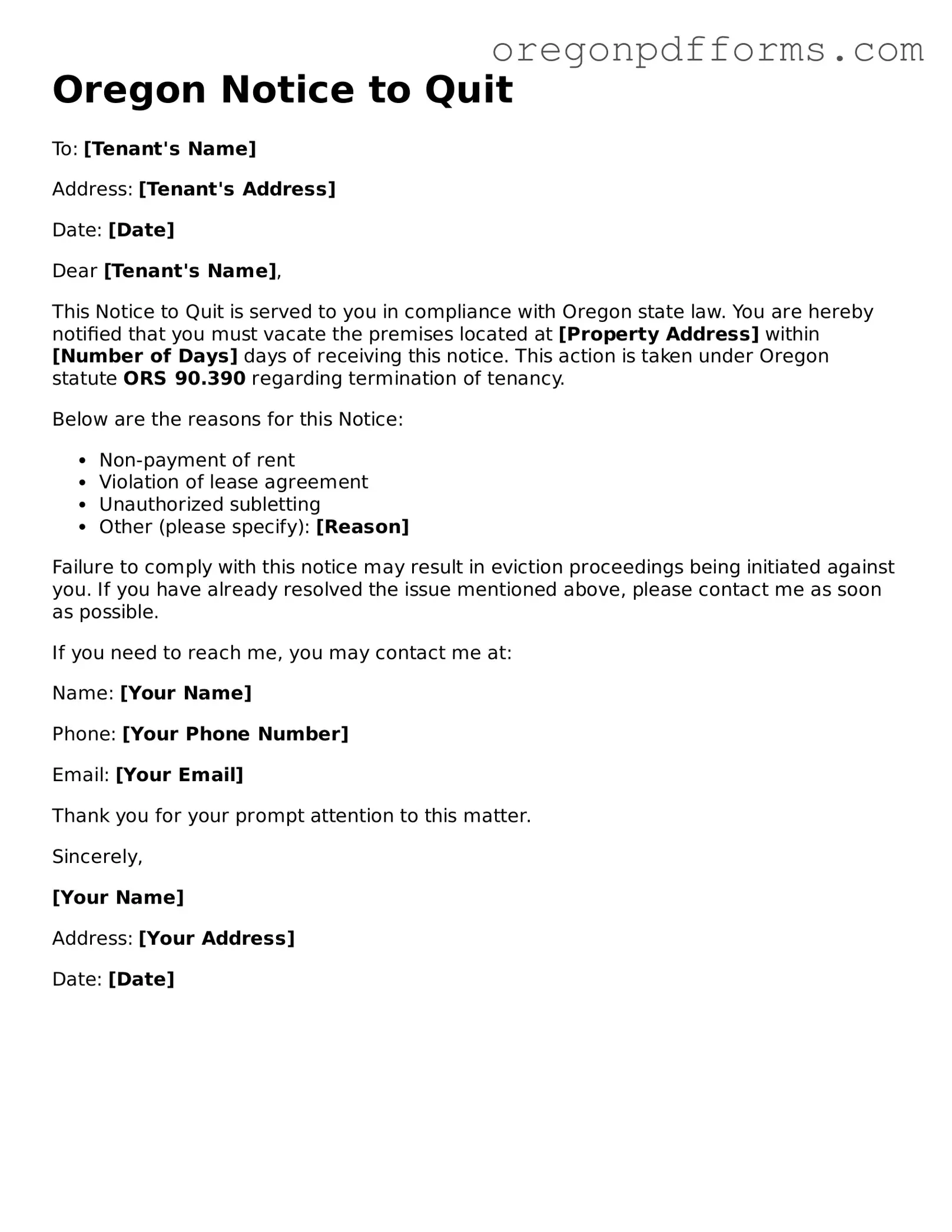The Oregon Notice to Quit form is a legal document that a landlord uses to notify a tenant that they must vacate the rental property. This notice is typically issued when a tenant has violated the terms of their lease agreement or has failed to pay rent. The form outlines the reasons for eviction and provides a deadline for the tenant to leave the premises.
When is a Notice to Quit required?
A Notice to Quit is required in various situations, including:
-
Non-payment of rent
-
Lease violations, such as unauthorized pets or excessive noise
-
End of lease term without renewal
In each case, the landlord must follow specific legal procedures to ensure the notice is valid.
How much notice must be given to tenants?
The amount of notice required depends on the reason for the eviction:
-
For non-payment of rent, a 72-hour notice is typically required.
-
For lease violations, a 30-day notice is common.
-
If the lease term is ending, a 30-day notice is also standard.
It is crucial to ensure that the notice period complies with Oregon state laws.
Can a tenant contest a Notice to Quit?
Yes, tenants have the right to contest a Notice to Quit. They can respond to the notice by addressing the issues raised or providing evidence to refute the claims made by the landlord. If the dispute cannot be resolved, the matter may proceed to court, where a judge will make a determination.
What happens if a tenant does not leave by the deadline?
If a tenant does not vacate the property by the deadline specified in the Notice to Quit, the landlord may initiate eviction proceedings. This process typically involves filing a complaint in court and obtaining a judgment for possession of the property. It is essential for landlords to follow the legal process to avoid potential claims of unlawful eviction.
Yes, the Oregon Notice to Quit form is available online. Landlords can find templates on various legal websites or through local housing authorities. It is advisable to use a form that complies with Oregon laws to ensure its validity.
What should be included in the Notice to Quit?
A proper Notice to Quit should include the following information:
-
The date of the notice
-
The tenant's name and address
-
The specific reason for the notice
-
The date by which the tenant must vacate
-
A signature from the landlord or their representative
Including this information ensures clarity and helps prevent disputes later on.
Can a landlord issue a Notice to Quit without a lease?
Yes, a landlord can issue a Notice to Quit even if there is no formal lease in place. In such cases, the landlord must still provide a valid reason for the eviction and adhere to the appropriate notice period based on the tenancy type, such as month-to-month or at-will tenancy.
